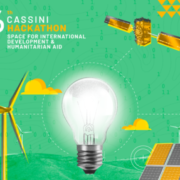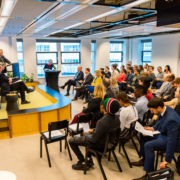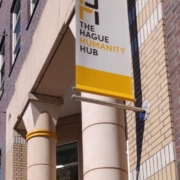What’s a Get it Done Day? And can it help your organization?
We spoke to Matt Barnaby, Hub member and Director of ImpactBasis, about what a ‘Get it Done Day’ is and how it can help small organisations work impactfully and collaboratively.
Having trouble being productive?
Do you spend an enormous amount of time on busywork? Busywork is the stuff that I do day in day out: emails, phone calls, chasing up, internal meetings, managing budgets, etc.
But they don’t really add value. It’s easy to be boxed in by busywork. A consequence of doing stuff is that it generates more stuff.
I’m a big fan of Cal Newport’s method of Deep Work. Following its rules, I turn things off, I remove distractions and then… Well, I quite often stare at the wall, scribble and procrastinate waiting for inspiration. I can often find myself actively looking for a distraction.
So if deep work is a concept that’s straightforward but tricky to do. Imagine this when scaled up.
And, imagine how difficult it is to achieve Deep Work when you have a team. This happened to a team I worked in, recently, and so we committed to a GiDD.
In course of the day, we were able to focus on the work needed, task up and get it done. We were more collaborative, less stressed and got to the outcome that we needed faster.
What’s a Get it Done Day?
Get it done days are simple really: take a day of 7 hours. Use 1.5 hours for breaks, this leaves 5.5 hours of focused work. Then scale this to a team of 7 people, with 5.5 hours of focused time, that’s 35 hours. That’s almost a working week of pure focus.
The day breaks down like this:
- 10 mins for what and why
- 15 mins for how and who
- Then you work. Maybe individually, in pairs or as a whole group — whatever
- Midway through the day, you check in for 15 mins to peer review work in pairs
- Then carry on
- Then as you near the end of the day, you take 15 mins to review the work and agree now what before holding a short retrospective to discuss something like ‘if we did this GIDDS again, how might we improve’
Sounds simple right? That’s because it is. The tricky bit is the execution.
Here’s a visual tool to help. As a team, you can follow this flow as closely or as loosely as you see fit. Adapt it, make it yours.
Remember, Good enough is good enough. The aim is to get something done in the day, something that you can share, release, implement. In many, messier cases you might need to do a 2 day or even 5-day sprint, I call these Impact Sprints (like design sprints but better).









